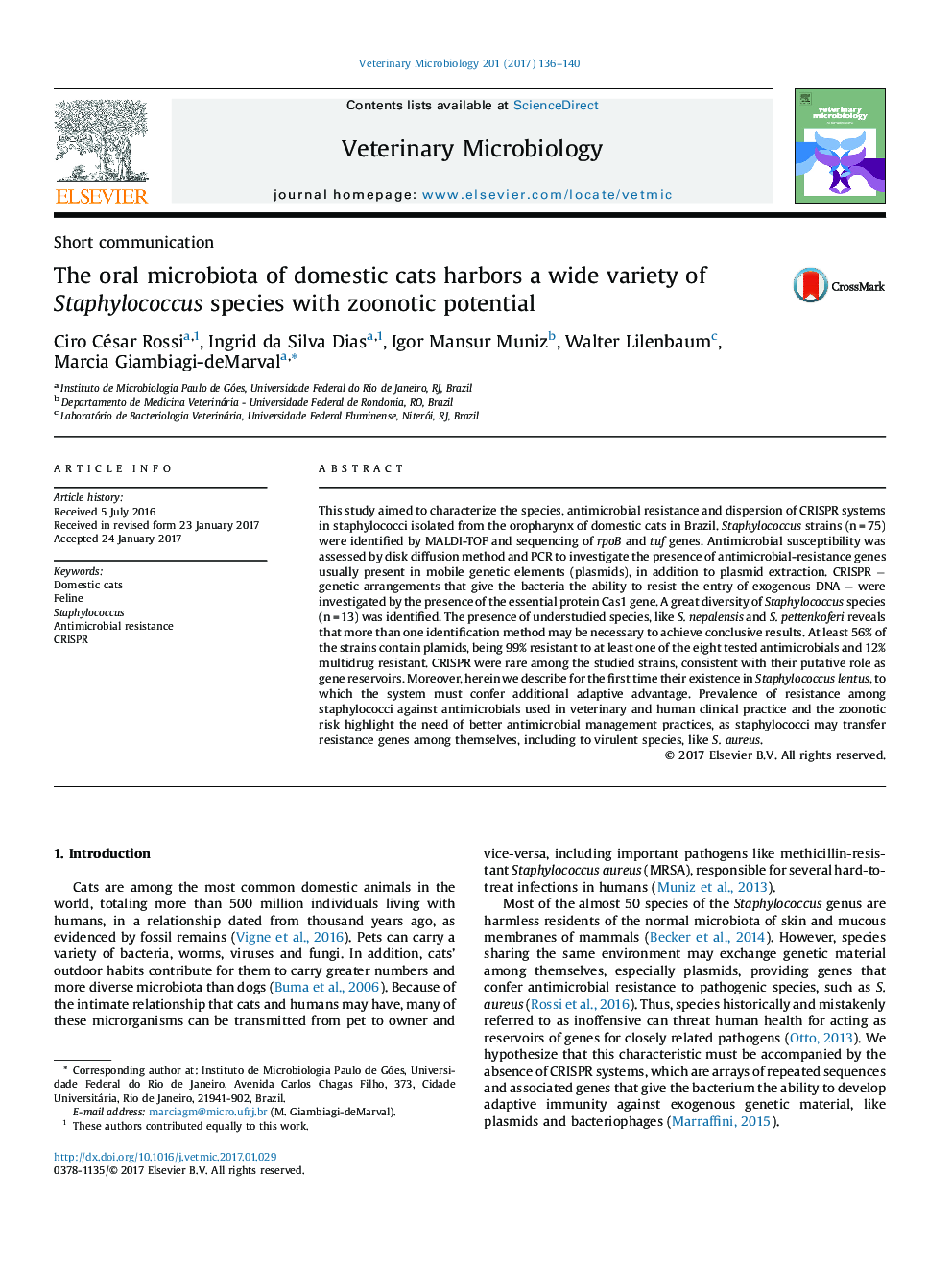| کد مقاله | کد نشریه | سال انتشار | مقاله انگلیسی | نسخه تمام متن |
|---|---|---|---|---|
| 5545145 | 1555322 | 2017 | 5 صفحه PDF | دانلود رایگان |
- A wide variety of Staphylococcus species (n = 13) was isolated from the oral microbiota of domestic cats.
- Many species isolated are potentially pathogenic for humans.
- Atypical strains reveal the need for alternative strategies for species identification.
- CRISPRs elements are rare, consistent with the strains role as gene reservoirs.
This study aimed to characterize the species, antimicrobial resistance and dispersion of CRISPR systems in staphylococci isolated from the oropharynx of domestic cats in Brazil. Staphylococcus strains (n = 75) were identified by MALDI-TOF and sequencing of rpoB and tuf genes. Antimicrobial susceptibility was assessed by disk diffusion method and PCR to investigate the presence of antimicrobial-resistance genes usually present in mobile genetic elements (plasmids), in addition to plasmid extraction. CRISPR â genetic arrangements that give the bacteria the ability to resist the entry of exogenous DNA â were investigated by the presence of the essential protein Cas1 gene. A great diversity of Staphylococcus species (n = 13) was identified. The presence of understudied species, like S. nepalensis and S. pettenkoferi reveals that more than one identification method may be necessary to achieve conclusive results. At least 56% of the strains contain plamids, being 99% resistant to at least one of the eight tested antimicrobials and 12% multidrug resistant. CRISPR were rare among the studied strains, consistent with their putative role as gene reservoirs. Moreover, herein we describe for the first time their existence in Staphylococcus lentus, to which the system must confer additional adaptive advantage. Prevalence of resistance among staphylococci against antimicrobials used in veterinary and human clinical practice and the zoonotic risk highlight the need of better antimicrobial management practices, as staphylococci may transfer resistance genes among themselves, including to virulent species, like S. aureus.
Journal: Veterinary Microbiology - Volume 201, March 2017, Pages 136-140
